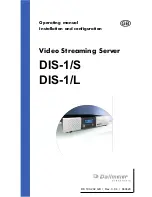
PAGE 11
The
FUNC
mode is indicated on the front panel LEDs by the LEDs quickly scrolling to the
right. When
FUNC
mode is cancelled, the LEDs scroll quickly to the left.
Basic Tuning
The Z-11ProII automates the process of matching an antenna load to the 50-ohm
characteristic impedance of coaxial cable feedline. Tuning occurs in one of two modes:
Automatic tuning mode, and Semiautomatic tuning mode.
When in
Automatic tuning mode
, the Z-11ProII will begin a tuning cycle any time that
there is forward RF power, and the measured SWR exceeds a preset threshold.
In
Semiautomatic tuning mode,
a tuning cycle will only begin when specifically requested
by pushing the
TUNE
button on the front of the tuner, or by pushing the
TUNER/CALL
button
on an appropriately interfaced compatible transceiver.
In either Automatic or Semiautomatic modes, the Z-11ProII employs two different types of
tuning cycles: a memory tuning cycle and a full tuning cycle. The
Tune
LED lights during
tuning.
The
memory tuning cycle
attempts to tune quickly, based on having previously tuned on the
present frequency selection. If the tuner previously was successful in tuning on the currently
selected frequency, the settings for that match will be loaded into the tuner relays, and checked to
see that an acceptable SWR match is found. If memory tuning fails to find a match, the tuner
falls through to a full tuning cycle.
A
full tuning cycle
“starts from scratch” and begins a fixed tuning sequence where the Z-
11ProII rapidly tries varying combinations of inductance and capacitance values, and then
zeroes-in on the best match possible. When the tuning cycle is complete, if an acceptable match
was found, the inductance and capacitance settings are saved in a memory associated with the
selected frequency, so that they may be recalled quickly in the future via a memory tuning cycle.
In this manner, the Z-11ProII “learns”; the longer you use it, the more closely it adapts itself
to the bands and frequencies used. Most users will probably use memory tuning most of the time;
it takes advantage of any saved tuning settings, but automatically defaults to a full tuning cycle if
no stored data is available.
In both cases, at the end of the tuning cycle, the carrier is held for 1.5 seconds after tuning is
complete, so that the final SWR may be read on the transceiver’s internal SWR meter or another
inline SWR meter, and the front panel LED will indicate the status of the tuning cycle.
Summary of Contents for Z-11ProII
Page 8: ...PAGE 8...










































